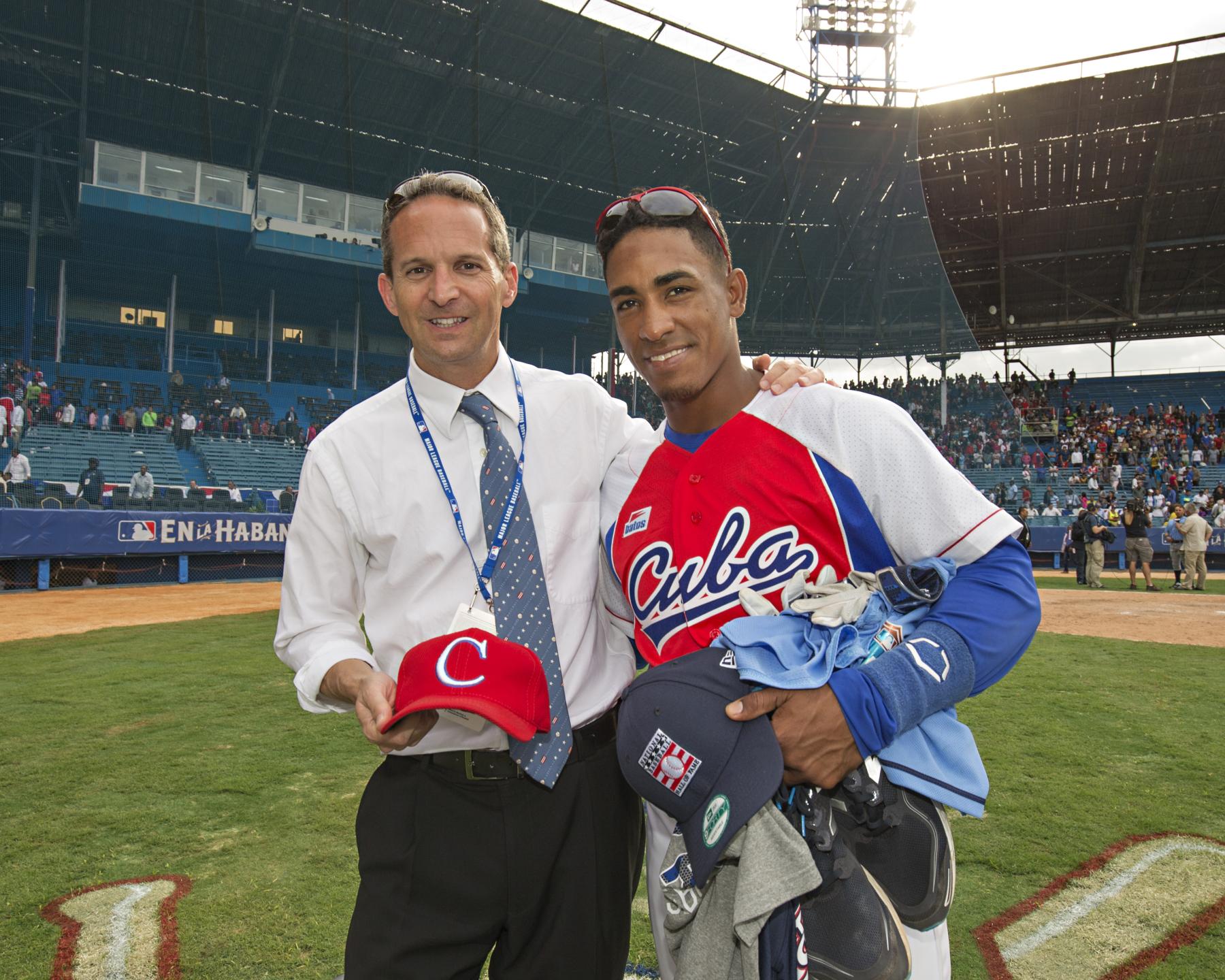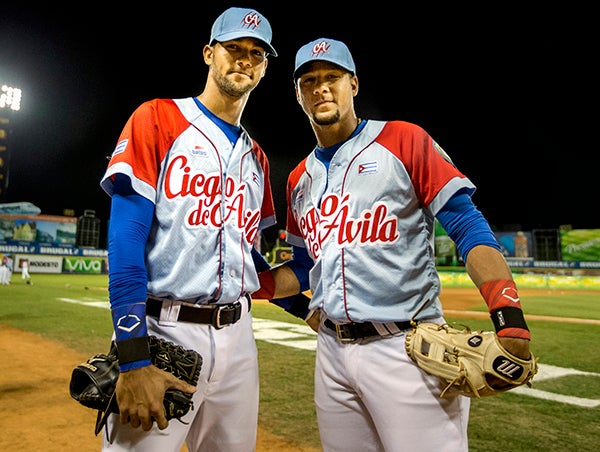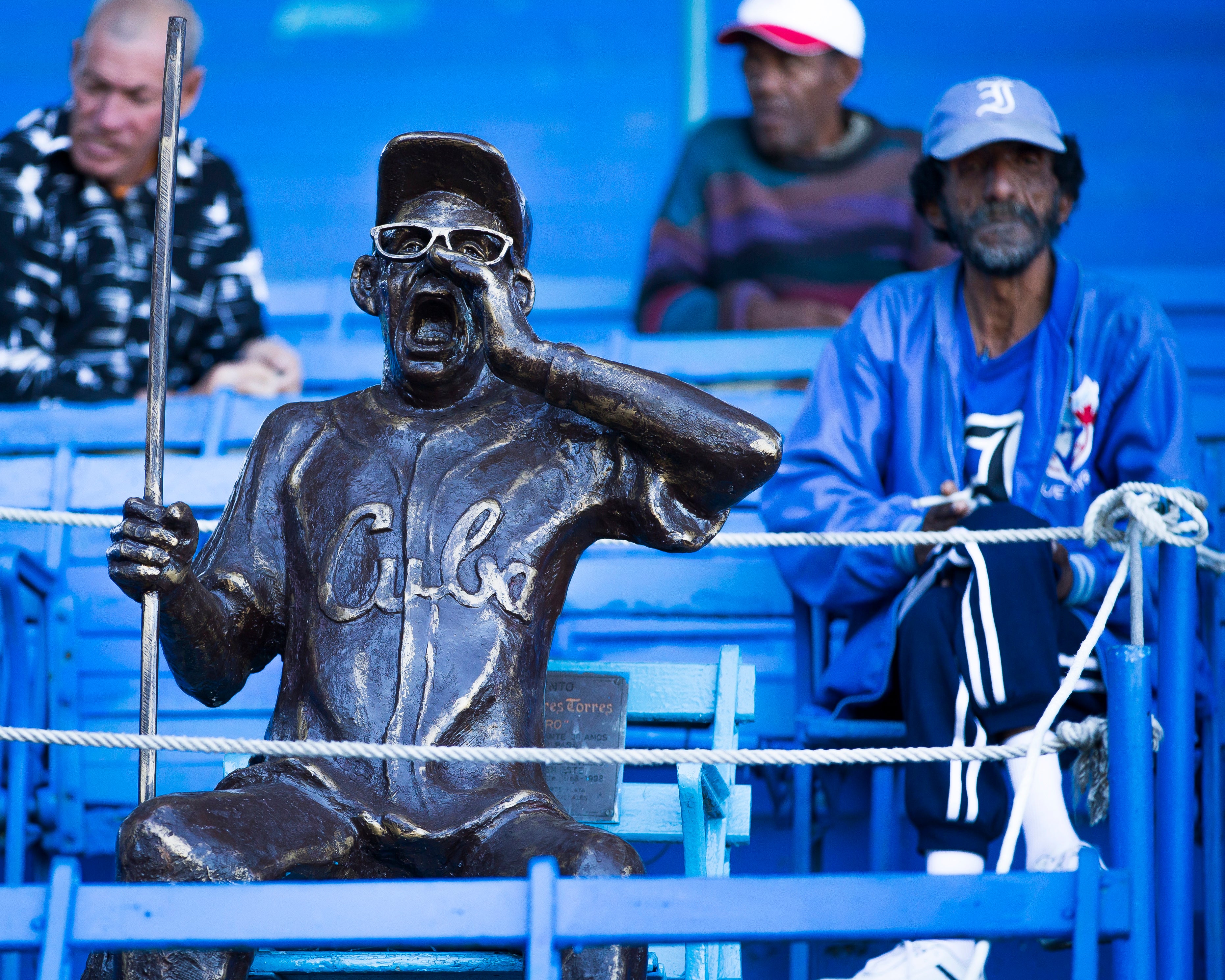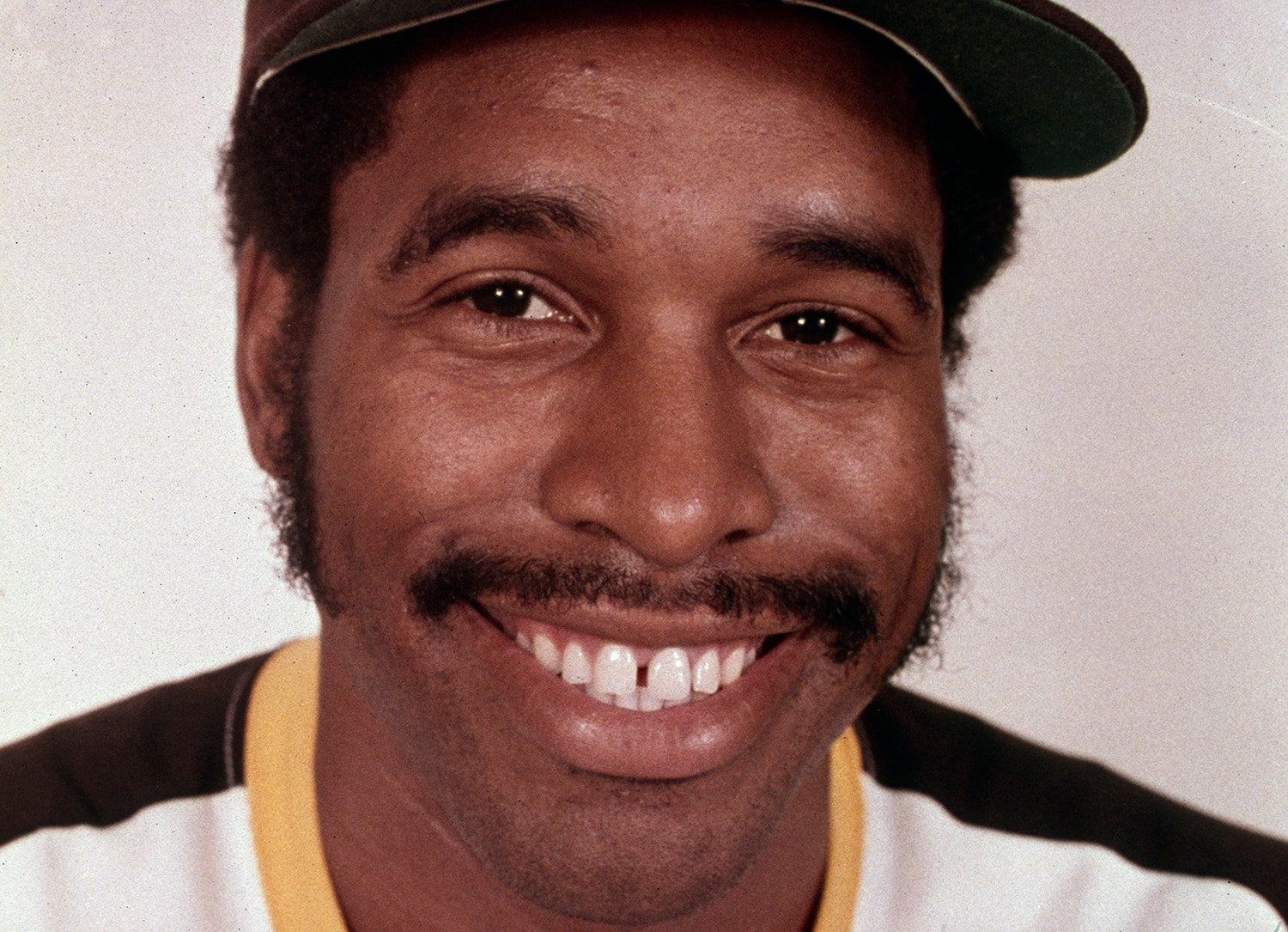- Home
- Our Stories
- Cuban history comes to Cooperstown
Cuban history comes to Cooperstown
While Cuba is only 94 miles off the coast of Florida, the Caribbean island nation has been largely isolated when it comes to relations with the United States. With the help of some recent baseball diplomacy, though, the icy association between the two is beginning to thaw – and the National Baseball Hall of Fame and Museum was there to document the historic undertaking.
On March 22, an exhibition game took place between the Tampa Bay Rays and the Cuban national team before a capacity crowd at the 55,000-seat Estadio Latinoamericano, Havana’s most famous stadium. And though the home team was defeated, 4-1, with the Rays’ James Loney homering and driving in three runs, the day will undoubtedly be best remembered for the presence of U.S. President Barack Obama, the first sitting U.S. president to visit Cuba since Calvin Coolidge 88 years ago, and Cuban President Raul Castro.
Sitting in the ballpark’s front row behind home plate, the two leaders took in the game in a public display toward normalizing relations between their countries after decades of diplomatic hostility. It was the first time a big league team had played in Cuba since the Baltimore Orioles participated in a similar exhibition in 1999.
Baseball dignitaries on hand for the game included MLB Commissioner Rob Manfred, Hall of Famer Dave Winfield, longtime New York Yankees shortstop Derek Jeter, Cuban pitching legend Luis Tiant, Jackie Robinson's widow Rachel Robinson and Hall of Fame President Jeff Idelson.
Among the donated artifacts from the historic contest Idelson returned to Cooperstown from Cuba with, which will go on exhibit this month, included the jersey worn by Rays manager Kevin Cash, the cap belonging to Cuban outfielder Roel Santos, the baseball thrown for the first pitch, a game-used baseball, Cuba’s dugout lineup card, and a ticket to the game.
Baseball gained its first Latin American foothold in Cuba, arriving on the island in the 1860s. While it wasn’t long before Cubans established the Caribbean's first pro league in 1878, professional baseball in the United States excluded the majority of Latin Americans because of their skin color, just as it barred African Americans.
Trailblazer Esteban Bellán, a native of Cuba, was the first Latin-born professional ballplayer, seeing action with the National Association’s Troy Haymakers and New York Mutuals between 1871 and 1873. Years later, in 1911, the Cincinnati Reds made news when the franchise signed Cubans Armando Marsans and Rafael Almeida.
The debut of Cuban Orestes “Minnie” Minoso with the Cleveland Indians in 1949 represented the opening salvo in a new wave of Latino talent in the big leagues that also had Cubans Tony Oliva, Leo Cardenas, Mike Cuellar, Cookie Rojas, Tony Gonzalez, Tony Taylor and Zoilo Versalles gracing box scores.
Soon after the 1959 Cuban revolution, professional baseball was outlawed in the country and replaced with amateurism. Though Cuba would often dominate international amateur competition in the ensuing decades, the embargo put in place in 1962 ultimately led to the recent defections of such familiar names as brothers Livan and Orlando "El Duque" Hernandez, Aroldis Chapman, Yoenis Cespedes, Yasiel Puig and Jose Abreu.
Hall of Fame Membership
There is no simpler, and more essential, way to demonstrate your support than to sign on as a Museum Member.
The Baseball Hall of Fame has more than 100 Cuba-related artifacts in its collection, the earliest a ball dating back to an 1898 game on the island. Other artifacts include a ball signed by players from the first Caribbean World Series in Havana in 1949, a ceramic plate representing a 1940s Almendares team, a 1950s Habana team pennant, a 1959 “Little World Series” championship ring from the Havana Sugar Kings, and a 1992 Olympic ball signed by Gold Medal-winning Cuban team.
“Baseball and Cuba have had a long history together ever since the game arrived on the island in the 1860s when returning students brought it home from the United States,” said Erik Strohl, the Hall of Fame’s vice president of exhibitions and collections. “Cuba quickly became engulfed with baseball passion, forming the Caribbean’s first pro league in 1878. Cuba has been baseball mad ever since. Major League Baseball’s first return to Cuba since 1999 marks another milestone in Cuba’s long baseball history.”
The Hall of Fame has among its 312 elected members four Cuban-born players: Martín Dihigo, José Mendez, Tony Pérez, and Cristóbal Torriente. No nation other than the United States can claim as many as four Hall of Famers.
“At the Hall of Fame, it is our mission to not just preserve and maintain the history of baseball in America, but to also trace the game’s impact on cultures around the world. By collecting artifacts from the game on March 22, we hope to be able to save a little part of this history for posterity,” Strohl said. “Though it may just be a single baseball game, its importance is much wider ranging than that. As the political relationship evolves between Cuba and the U.S., their baseball relationship will change as well.
“Hopefully these artifacts will serve as a reminder of the power of baseball to bring cultures together and to act as a signpost marking moments of historical change.”
Bill Francis is a Library Associate at the National Baseball Hall of Fame and Museum






